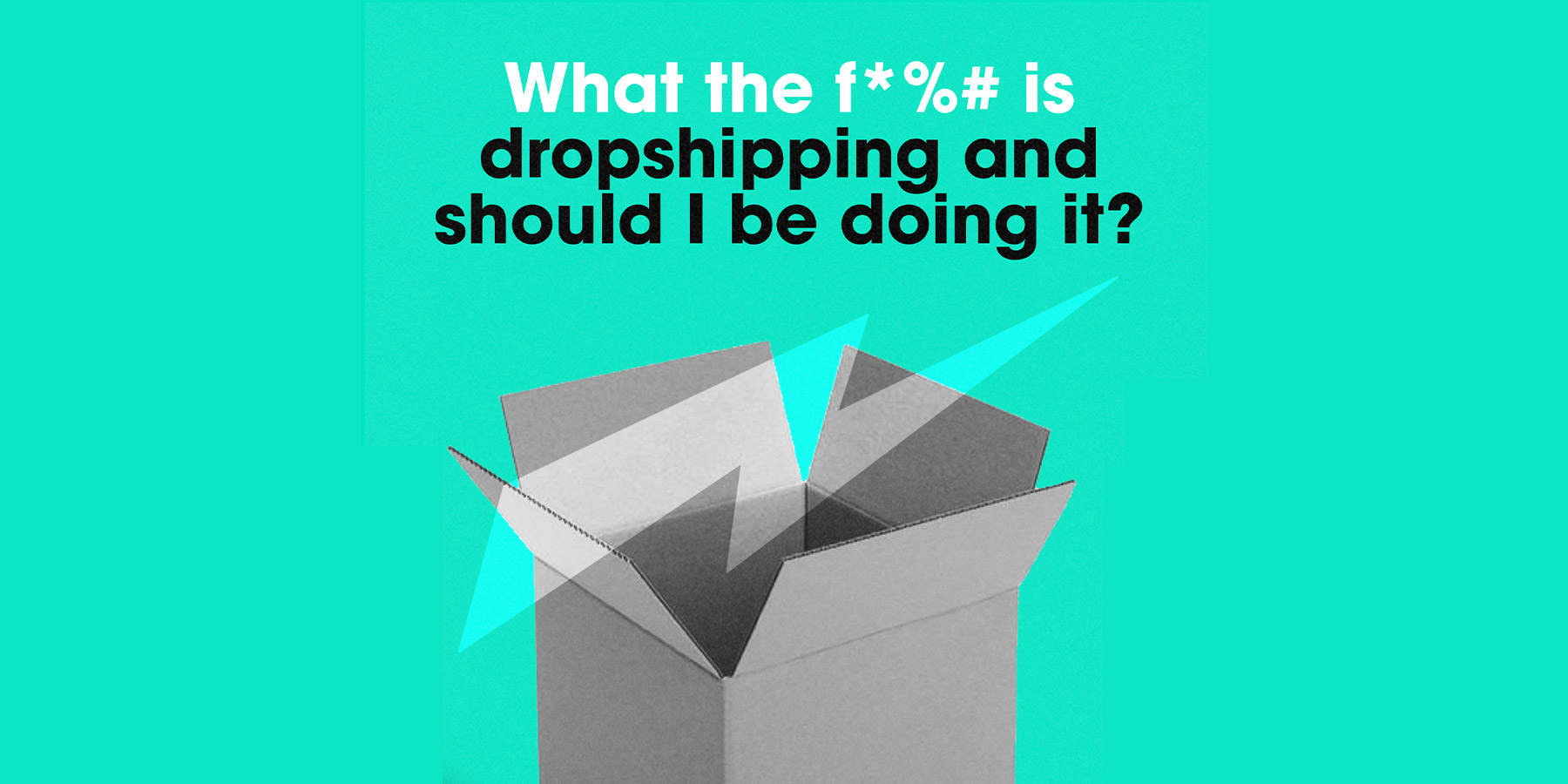So, you’ve listened to a few marketing podcasts, read a few business blogs, and are convinced that dropshipping is the golden ticket to your entrepreneurial dreams. But before you start brainstorming witty storefront names, let’s take a closer look at the world of dropshipping and have an honest look at whether or not that ticket truly is golden, or just tin foil.
So what even IS dropshipping?
In simple terms, dropshipping is an e-commerce model where you run an online store without physically stocking any of your products. Instead, whenever a customer makes a purchase, you then order the item directly from a third-party supplier who then ships it to the customer. You never even touch the product.
What are the pros of dropshipping?
- Low financial risk: Since dropshipping eliminates the need for you to hold inventory, you have no need to buy a product before it sells. With dropshipping, you only buy a product once you’ve made a sale—meaning you will never have stock that you can’t sell.
- Work from home, cafe, beach, anywhere: In the age where WFH is king, dropshipping businesses are very appealing due to the flexibility of running them. As long as you have an internet connection, you can manage your biz from anywhere in the world.
- Stock whatever you like: Since you’re not tied to ordering physical stock and moving it, you can offer a wide range of diverse products without the headache of managing a large inventory.
- Easy to start: Platforms like Shopify have streamlined the dropshipping process, making it easy to set up, run, and manage, even for those without a thorough understanding of e-commerce, business, and the like.
What are the cons of dropshipping?
- Skinny profit margins: While dropshipping means your outset costs are slim to none, so are the profit margins. Cutthroat competition, a saturated market, and other expenses can really eat into your earnings.
- Customer service nightmare: Pro: You never hold inventory, Con: You never hold inventory… so how do you know the inventory you’re selling is any good? As the face of your business, you’re responsible for handling customer complaints and issues, even if they stem from a faulty product sent by your supplier.
- Sloooow shipping: Dropshipping suppliers are notorious for long shipping times, as the products usually come from international suppliers. In the world of instant gratification, your customers may be turned off by your 2-4 week lead times.
- Saturated market: “Dropshipping seems so easy! So why isn’t everyone doing it?” Well, a lot of them are! And a lot of them are selling identical products, even using identical images from their suppliers. Since you’re not selling unique, original products, you are competing with thousands of brands offering the exact same products — how will yours be different?
- Unethical manufacturing: It bears importance to note the ethics of many dropshipping products and suppliers. Sure, it may be very appealing to sell a handbag for $50 that you purchased from your supplier for $5, but this deal comes at a significant ethical price — the exploitative and unfair labour practices endured by the people who made that very product. Choose your suppliers cautiously.
Should I start dropshipping in 2024?
Look, we’re not your mum, so we’re not going to tell you what to do (because you STILL haven’t cleaned your room), but here’s a few words of advice:
The decision to dive into dropshipping depends on your risk tolerance, your dedication, and your goals. It’s not a guaranteed shortcut to success like many an entrepreneurial podcast will have you think, and it requires a considerable amount of effort and attention, especially now in such a saturated market.
Would we opt for it ourselves? Probably not.
The early days of setting and forgetting a dropshipping store and making big bucks are over. The oversaturated market means one thing: Even a dropshipping storefront requires a LOT of work, investment of money into marketing, and time spent maintaining your store.
And in our minds? If we’re spending that much time on a business, we’d much prefer to work with a supplier to create unique product/s to sell, market, and be proud of.
Becoming an entrepreneur has never been more accessible. If you have an idea, ecommerce platforms like Shopify make it incredibly easy to get started. And if you need an extra helping hand? Well, we’re always here to help too ????
Well, I want to try dropshipping anyway!
If you’re gung-ho about giving dropshipping a go, here’s some things to consider:
- Do your best to source ethical suppliers: Your margins may get slimmer, but your impact on the people who craft your materials (and the quality of their work) will be vastly better. A reliable supplier will be the backbone of a successful dropshipping business.
- Opt for quality over quantity: While it’ll be tempting to stock everything your supplier offers, instead carefully choose a niche that aligns with your interests, market demand, and has room for growth.
- Be honest with your customers: It’s imperative to be transparent about shipping costs and delivery times. Slow shipping + unexpected fees = unhappy customers + bad brand reputation.
- Be prepared to become a customer service PRO: When it comes to dropshipping, you MUST be ready to provide excellent customer service. This means addressing inquiries quickly and handling returns, issues, refunds, resend, etc. professionally and with your customer’s best interests at heart.
- Make sure you’re legally compliant: Yep, it sounds boring, but legal compliance is essential for any business to avoid BIG trouble down the line. Ensure your business complies with all legal requirements, including tax, GST, consumer protection laws, etc.
- Do NOT skimp on the marketing budget: Since the dropshipping world is so heavily saturated, your branding and marketing are ESSENTIAL. You’ll need to develop a thorough marketing plan, social media strategy, and invest into paid advertising to drive people towards your store. Building brand awareness will be your #1 goal upfront.
Overall, dropshipping can definitely be a viable business model, but it’s also vital to be realistic about all the challenges involved too. As with any business endeavour, you will only get out of it what you put into it. Plus or minus 4 weeks shipping time.





